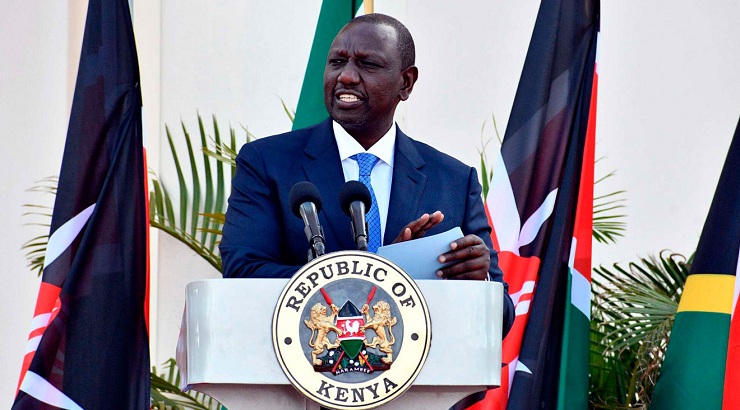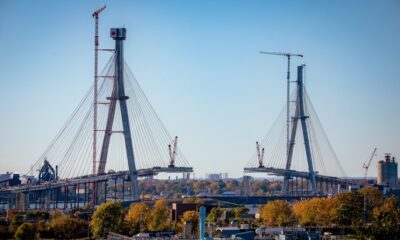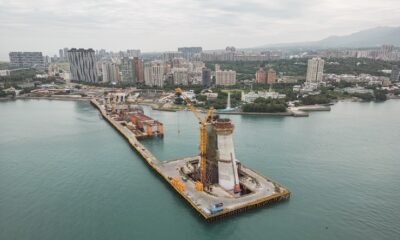Infrastructure
Why Ruto Wants to Extend SGR from Naivasha to Malaba
The 216km railway will traverse Narok-Bomet-Kisumu-Malaba.

President William Ruto’s government has revived plans to extend the standard gauge railway (SGR) to Malaba via Kisumu in a bid to help the facility realise its full potential.
According to Roads and Transport Cabinet Secretary Kipchumba Murkomen, the government views extension of the SGR to Malaba as the best way to ensure viability of the entire railway that runs from Mombasa to Naivasha.
“This project will only make sense when it goes past Naivasha as compared to the current situation where we are forced to transport goods by the lake instead of having it through the Kisumu port,” Murkomen said in an interview.
Phase 1 of the SGR project – running from Mombasa to Nairobi – was completed in 2017 at a cost of Sh327 billion, while Phase 2A from Nairobi to Naivasha was completed in 2019 at a cost of Sh150 billion.
Shortly before the completion of the Nairobi-Naivasha line, the government activated plans to extend the railway to Malaba on the Kenya-Uganda border.
Dubbed Phase 2B of the Kenya SGR project, the railway was to pass through Narok-Bomet-Kisumu, then from Kisumu through Yala to Bumula and Malaba.
It was to be built at a cost of $3.5 billion (Sh437 billion).
Naivasha-Narok route
On September 18, 2015, the Cabinet approved the Naivasha-Narok route – diverting the railway from the original Naivasha-Nakuru-Narok route.
This was done to outsmart politically influential persons who had gone on a land acquisition spree along the route in anticipation of huge compensation payments.
READ: How Powerful Elite Forced Uhuru to Reroute Naivasha-Kisumu SGR
Kenya’s plan was running smoothly until September 2018 when the government approached China for a third round of funding for the Naivasha-Kisumu SGR.
The Asian nation declined to approve the loan.
This was shocking since Kenya and China Communications Construction Company had a month earlier agreed to build the railway, with only the finer details of the deal set to be finalised weeks later during President Kenyatta’s tour of China.
That did not happen.
Instead, Chinese Premier Xi Jinping asked the parties to defer making the approval until Kenya undertook a commercial viability study on the entire Mombasa-Kisumu railway.
READ: China Opts Out of Sh380bn Kisumu Railway Deal
Kenya later announced that it would not proceed with the Naivasha-Malaba SGR, and would instead rehabilitate the existing metre gauge railway to Kisumu.
However, in January this year, China’s Foreign Minister Wang Yi expressed optimism over a possible reopening of talks on the botched SGR funding deal with Kenya.
Horn of Africa
Speaking during a tour of China-funded projects in Mombasa, Wang said the SGR project had been prioritised for completion under a Horn of Africa masterplan that seeks to help the region accelerate construction of industrial and economic belts.
Under the plan, the SGR would be extended from Naivasha to Uganda, Rwanda, South Sudan, and eventually to the Democratic Republic of Congo.
RELATED: Kenya Advances Plans for Sh1.9 trn Railway to Ethiopia
Although Mr Wang did not discuss the financing aspect of the project, Kenya warmed up to the idea and agreed to take up a new loan for the project.
A Cabinet memo seen by CK reveals that President Uhuru Kenyatta’s administration had approved plans to take a $4.8 billion (Sh604 billion) loan from China to extend the railway to Malaba.
Greenfield port
According to the memo, the loan would facilitate construction of a 216.3km electric standard gauge railway and an 8.9km branch line to a greenfield port that was to be developed in Kisumu as part of the project.
It remains to be seen how the new administration will navigate this matter.












